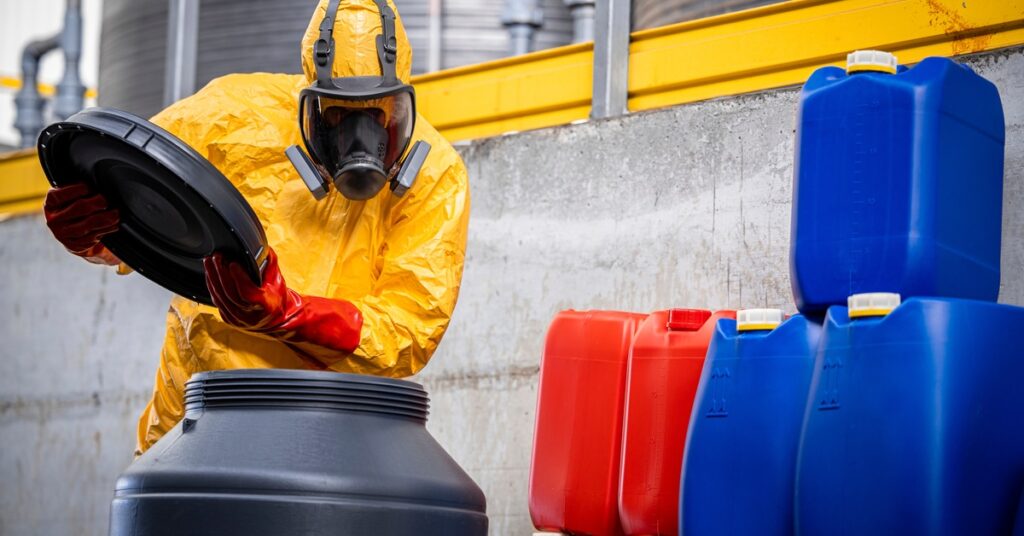Volatile organic compounds (VOCs) contribute to air pollution, create smog, and pose health risks. These compounds originate from solvents in various industrial applications. Industries understand the need for better air quality, so they find effective methods to address VOC emissions. Solvent recovery is one such method. Let’s discuss all the ways solvent recovery can reduce VOC emissions.
Deep Dive Into VOC Emissions
Volatile organic compounds (VOCs) significantly contribute to air pollution, but what makes them so harmful? VOCs go into the atmosphere and react with nitrogen oxides (NOx) under sunlight to form ground-level ozone, also known as smog. This air pollution reduces air quality and affects the environment and human health.
Ground-level ozone harms vegetation, interfering with plant growth and reducing crop yields. For humans, exposure to VOC-laden air increases the risk of respiratory issues, cardiovascular problems, and other health complications.
VOCs also release tiny particulate matter (PM2.5) when they undergo chemical reactions in the air, further worsening air pollution. These fine particles can enter the lungs and bloodstream, causing long-term health risks and increasing urban pollution.
Solvent recovery systems tackle this issue by capturing and reusing VOCs, thereby reducing their release into the environment.
Recycle Solvents From Industrial Processes
Industries such as manufacturing and pharmaceuticals depend on solvents for cleaning, chemical reactions, and material processing. Without proper recovery methods, these solvents escape into the environment as harmful VOC emissions. This waste increases pollution and loses the opportunity to turn into valuable resources.
However, solvent recovery systems collect and purify vaporized or spent solvents, allowing industries to reuse instead of discarding them. Distillation and carbon adsorption separate contaminants and condense the solvents back into usable forms.
For instance, pharmaceutical manufacturing involves solvents that carry out reactions or extract active compounds. By recovering these solvents, companies prevent VOC leakage while reducing their dependency on purchasing fresh chemicals.
Other Industry Solvent Recovery Helps
The paint industry relies on solvent-based products. Paint production, application, and cleaning all generate VOC emissions if solvents evaporate. Fortunately, paint solvent recycling machines capture and recycle solvents from cleaning processes or leftover paint mixtures.
Besides the paint industry, the automotive sector also benefits from solvent recovery technology. Solvents clean engine parts, mix coatings, and paint vehicles. Without recovery systems, these processes would release substantial VOCs.
Moreover, the printing industry thrives on solvent recovery. Printing presses use solvent-based inks and cleaners, which can release VOCs during the drying and cleaning phases. To mitigate this, many facilities invest in carbon adsorption machinery that captures and recovers vapors. Such systems reduce fumes escaping into the air, improving air quality within print shops and surrounding areas.

Improve Air Quality
VOC emissions happen when solvents evaporate into the air during industrial processes. Traditional methods, like venting or storing solvents in open containers, increase the likelihood of VOCs escaping. However, solvent recovery can reduce VOC emissions by prioritizing containment, which improves air quality. By containing solvent vapors at their source, industries minimize the impact of their operations on local air and public health.
Modern systems use innovative techniques to capture solvents efficiently. For example, carbon adsorption units trap solvent vapors by passing them through activated carbon filters, which absorb the VOCs. Additionally, distillation units refine collected solvents, removing impurities. These technologies streamline the reuse process while lowering emissions during production or cleaning routines.
Reducing VOC emissions has ripple effects beyond the workplace. Lower VOC levels in the air lead to healthier communities and less ecosystem strain. Inside the workplace, fewer solvent fumes create safer conditions for workers, protecting them from respiratory issues or long-term exposure risks.
Contribute to Carbon Footprint Reduction
The release of VOCs contributes to the formation of ground-level ozone and smog, which exacerbate climate change. Additionally, the disposal of waste solvents through methods like incineration produces secondary pollutants, including carbon dioxide.
Addressing VOC emissions through solvent recovery directly impacts a company’s carbon footprint. Overall, containing and recycling these substances help organizations reduce the need for processes like burning that contribute to greenhouse gas emissions.
Benefits of a Reduced Carbon Footprint
Reducing your carbon footprint helps the planet. Here are some key benefits organizations can achieve by cutting down emissions through solvent recovery:
- By reclaiming and reusing solvents, companies spend less on raw materials and waste disposal, leading to substantial operational savings over time.
- Taking proactive steps to reduce emissions shows a commitment to sustainability, building trust and favor among environmentally-conscious consumers and stakeholders.
- Reducing emissions aligns with global efforts to combat climate change.
Support Regulatory Compliance
Agencies like the US Environmental Protection Agency (EPA) and the European Environment Agency (EEA) impose strict limits on industrial VOC emissions to protect air quality and public health. Failing to meet these standards can result in fines, operating restrictions, or reputational damage.
Solvent recovery systems empower businesses to stay ahead of regulatory demands by reducing emissions at the source. Many recovery systems also generate detailed data logs, allowing companies to track their emissions and provide proof of compliance when needed.
Promote Circular Economy Principles
The circular economy minimizes waste and keeps resources in use for as long as possible. Solvent recovery drives this concept by creating a reuse cycle instead of disposal. Recovery systems purify spent solvents and return them directly to production lines, preserving valuable resources and reducing waste.
Industries actively contribute to closed-loop systems by adopting solvent recovery. For example, pharmaceutical companies reuse recovered solvents in manufacturing and packaging, reducing resource consumption and waste generation. This practice reduces reliance on virgin materials, meets customer demands for sustainable operations, and propels global efforts to build more sustainable industrial systems.

Implementing Solvent Recovery Into Your Company
Integrating solvent recovery systems into your business operations is easier than you might expect. First, determine how your company uses and handles solvents. How much do you consume? How much waste do you produce? This assessment helps you see where a recovery system could make the most impact—not just in terms of waste reduction, but also in cost savings and efficiency.
Once you have a clear picture, the next step is choosing the right recovery system. At Solvent Waste Management, we offer high-performance solutions tailored to meet various industry needs. Whether your company handles a high volume of solvents or needs a compact system for smaller operations, we have equipment designed to optimize your workflow and minimize waste.
Once the system is in place, you’ll notice reduced waste, lower operational costs, and a streamlined process that keeps valuable resources in circulation!

